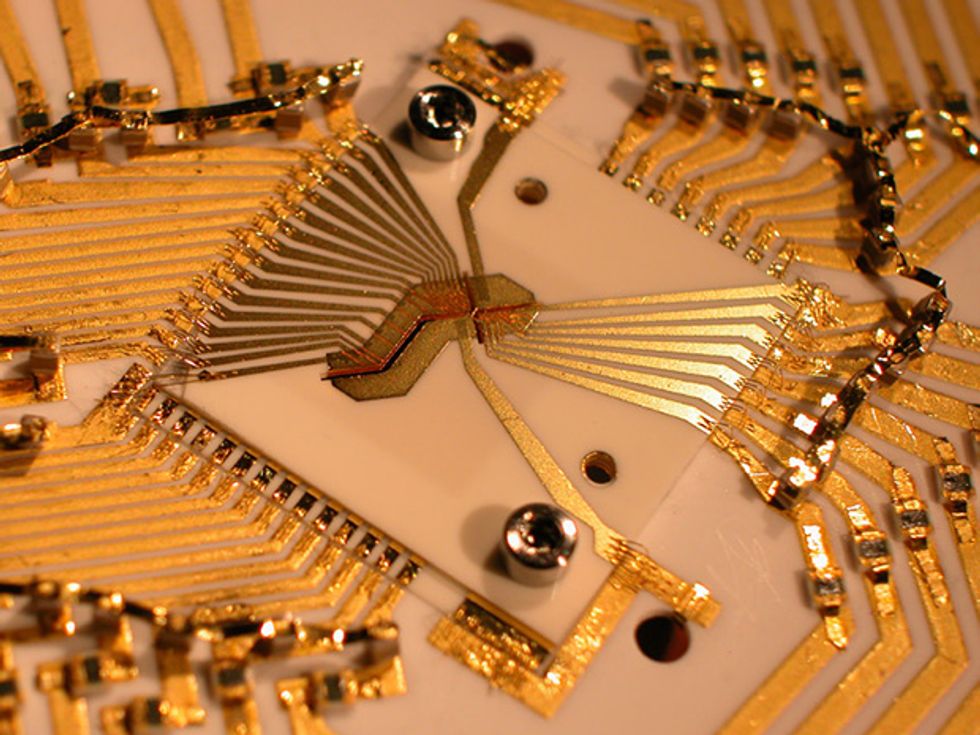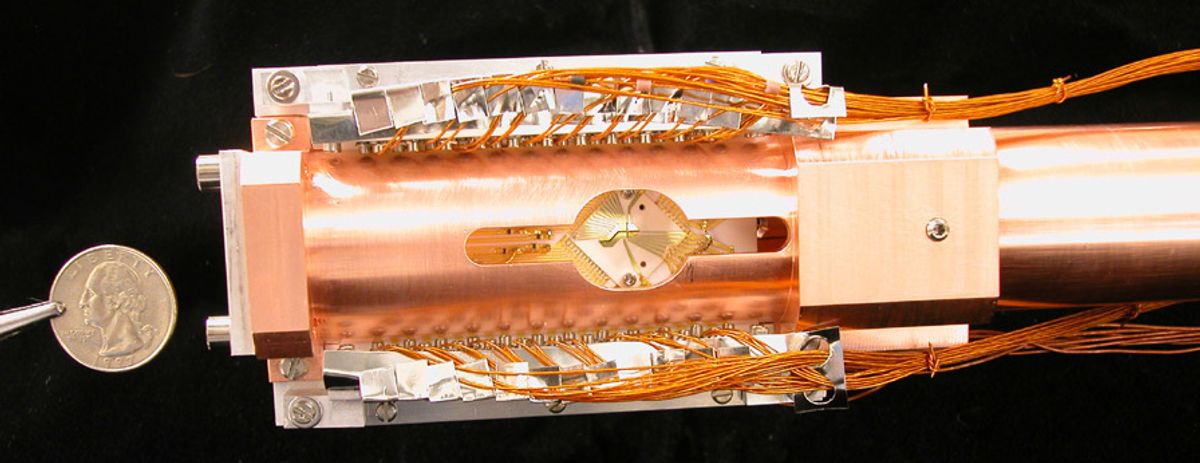Last week two research groups, one at the National Institute of Standards and Technology (NIST) in Boulder, Col., and one at the University of Oxford reported experiments in which particles of different species were entangled for the first time.
Entangled particles—whose quantum properties remain linked, even if separated (in principle) by intergalactic distances—will form the building blocks of future quantum computers. Up to now scientists have entangled photons, electrons, and ions of the same species. The NIST group reported in the journal Nature that they successfully entangled magnesium ions and beryllium ions, and used the entangled pair to demonstrate two key quantum logic operations—CNOT and SWAP gates. The scientists at Oxford obtained a similar result with ions of calcium-40 and calcium-43, and also performed tests proving that showed that the pair were properly entangled. They, too, reported their results in Nature.
Ions, because of their positive electric charge, can be trapped in the crossed electromagnetic fields of a so-called Paul trap, which was used by both groups to entangle the ions. A Paul trap is essentially a small glass tube with electrodes that supply the electromagnetic fields that force the ions into minimum-energy positions, a few micrometers apart. The Paul trap is placed inside a large, one qubic-meter vacuum chamber to minimize the influence of ambient air molecules that would destroy the entanglement of the trapped ions, explains Ting Rei Tan, a physicist at NIST who participated in the research.

Once the ions were trapped scientists blasted them simultaneously with a laser pulse—which caused them to remain entangled long enough for tests—and with a pulse that probed the pair’s quantum state. Because the ions are different, and respond to different wavelengths of light, they can be probed independently; one ion is sensitive to the pulse while the other is unaffected by it.
They respond differently in another way as well. One ion needs to be prodded strongly before it changes its quantum state, but remains in the new qauntum state for a comfortably longer time—its decoherence time is long. The other ion is very sensitive to disturbances from outside, but decoheres quickly.
This quirky quantum behavior may resolve a common problem in quantum computation, says Chris Ballance, who is part of the Oxford group:
“You have these two contradictory requirements: You want a system which is pretty well isolated from the environment, so that your quantum state does not get muddled by stuff going on in the environment around it. You also want a system to couple very strongly to the environment when you want to manipulate it. You want to be able to press a button and change some part of your quantum state, which involves the environment going in and interacting with your system very strongly.”
This way, scientists can address two functions of quantum computing with one entangled pair: controlling qubits and storing data into memory. Qubits sensitive to the environment have short lives while qubits that are insensitive to the outside world keep their entangled state, thus their data, much longer.
"This way we have our cake and can eat it too. We have a system that couples very strongly with the environment, and a separate system which has a good memory," says Ballance.
Although this is an important step, the actual building of a quantum computer using such pairs is still a daunting task. "We are taking the first baby steps… Future quantum computers will need many more quantum bits, maybe hundreds," says NIST’s Tan.
There are two possible approaches to link up qubits in such a quantum computer, a large Paul trap containing a whole computer, or the use of "flying qubits." According to Ballance:
“The first way is to make a really complex Paul trap, with a lot of electrodes where you can turn on and off gates and move ions back and forth--you can imagine it as a very complicated grid of city streets, with electrodes moving and pushing ions around in different parts of the trap. The other approach is to make lots of small isolated traps, and then use interface qubits to send up photons coupled into optical fibers that network a lot of these small systems together.”



